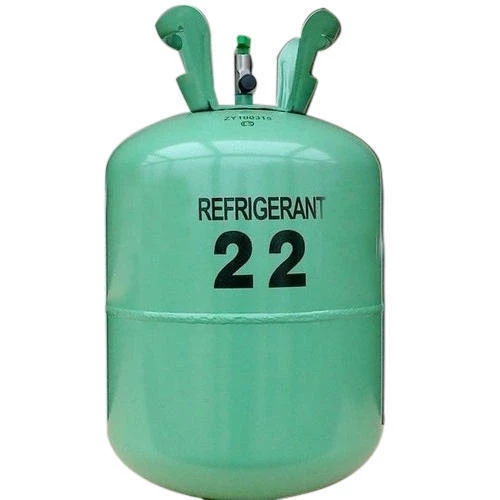How Obsolete R22 Refrigerant Affects Your Budget
Index:
The Rise and Fall of R22
R22 Begins Life in Air Conditioning Systems
In the late 1920s and early 1930s, CFCs were created as means for a non-flammable refrigerant solution. Among these CFCs, R22, a hydrochlorofluorocarbon (HCFC), came into being in the 1930s and began being used in refrigeration and air conditioning systems.
Discovery of The Ozone Hole
Several decades after the common use of R22 began, scientists would discover in the 1970s that the chlorine in CFCs (chlorofluorocarbons) would react negatively with ozone molecules in a way that a single chlorine atom could quickly and effectively shred through thousands of ozone molecules. In the 1980s, we discovered a giant hole in the ozone layer above the Antarctic. This “hole” in the ozone layer of the upper atmosphere threatens health risks to both people and the environment. Certain chemicals, including R22, which were already recognized as ozone-depleting, were included in the work that began on finding solutions to this global problem.
The 1987 Montreal Protocol
With the Antarctic Ozone Hole now a significant danger on a global scale, the Montreal Protocol treaty was drafted and signed by 197 countries, achieving a status as the first UN treaty to reach universal ratification. This treaty required that countries work toward phasing out ozone-depleting chemicals. According to the U.S. State Department, “The Montreal Protocol, finalized in 1987, is a global agreement to protect the stratospheric ozone layer by phasing out the production and consumption of ozone-depleting substances (ODS).”
R22 Phase-Out Begins
By January of 2010, new air conditioners being manufactured were no longer allowed to used R22 refrigerant in their newly-manufactured equipment. R410-A, or Puron, by brand name, soon replaced R22 as the standard refrigerant to be used in new air conditioning systems. R410-A, a hydrofluorocarbon (HFC) was a new refrigerant that is free of those pesky chlorine atoms that were destroying ozone molecules by the thousands. However, existing equipment that was manufactured prior to 2010 that utilized R22 could still be serviced, even though it costs a bit more to refill them.
R22 Becomes Obsolete
By January 1, 2020, EPA regulations banned R22 completely from production and import in the United States. If your air conditioner still uses R22, the next time your system has a leak or needs a charge, the cost to repair the old system may exceed the cost of just replacing the unit. The world of science is built upon a series of successful AND unsuccessful attempts at improving what we already know and do. Though R410-A is a much healthier option for humanity, there's still room for improvement. Significant developments are still being made in the world of refrigerants, to this day. A leading replacement has already been identified (R32) with one-third of the global harm potential of R410-A. Rest assured, though, that R410-A is still a much more conscious option for the planet compared to R22, in addition to being much more efficient as a refrigerant, thus saving you more money in the long run. These other new refrigerants are just getting more and more efficient with less harm involved. It's pretty "cool" if you ask us.
How This Affects You
While the phasing out of HCFC's is a solid step in restoring the ozone layer, this does affect many people when it comes to older units still using this refrigerant. When we perform routine maintenance, service calls or repairs involving R22 Freon, we’ll need to remove all Freon from the unit and install a new supplemental Freon called “R407c.”
Fortunately, we're less likely to get fried to a crisp the moment we step outside. Unfortunately, this process will make associated repairs an estimated 2-4 times what they normally are in costs. We’ll essentially be performing a “blood-transfusion” on each of these systems in order to make common repairs and to do something as simple as “add a few pounds of Freon to the system”.
For example, we find a unit low on Freon and need to add 3 pounds to the system; we’ll first have to evacuate all 15 pounds of old R22, and then replace it with “R407c,” so instead of a service invoice for something around $300, it will run around $900.
Currently, our trigger for quoting replacement RTUs is when the cost to repair is approximately 40-50% of that of an entire replacement. With factoring in these Freon conversions, there may be more recommendations for replacement as a result of the inflated costs of repair.
This article has been shared by Direct Service, Construction and Design to specifically accommodate our intended clientele. The intent of sharing this information is to better inform the public of these general topics, expand knowledge and safety for all and provide crucial information in regard to their MEP and building systems and/or assets. It is NOT our recommendation that any article recommendations or how-to scenarios be attempted by anyone other than a qualified or competent person.
